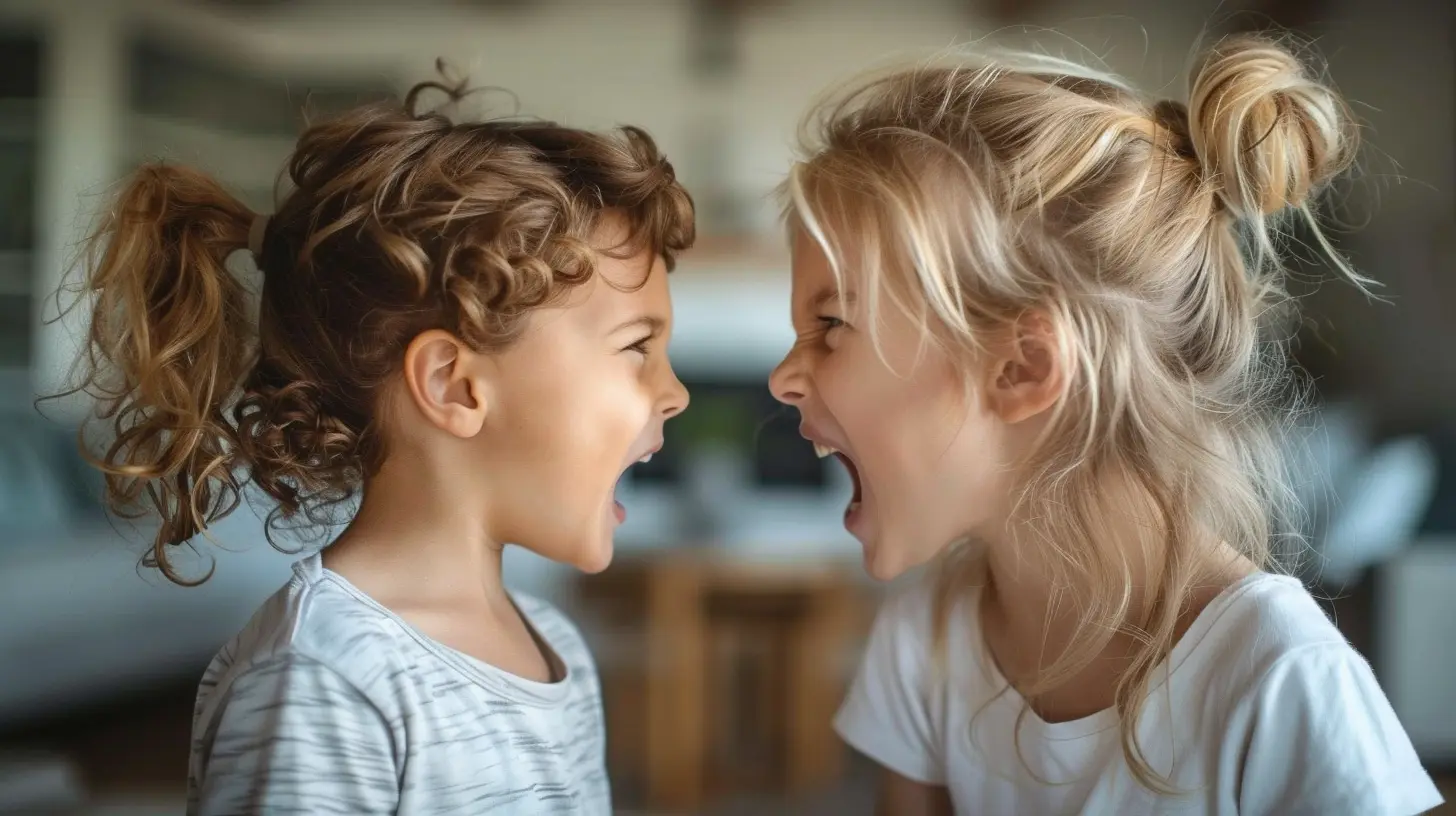The Importance of Emotional Validation in Parent-Child Relationships
21 October 2025
Parenting is hard. There are no cheat codes, no perfect playbook, no one-size-fits-all formula. But there is one thing—one powerful, often underestimated tool—that can shape your child’s emotional well-being and deepen your bond with them: emotional validation.
Sounds fancy, right? But trust me, it’s a lot simpler (and more magical) than it sounds.
So, let’s break it down, talk about what emotional validation really is, why it matters, and how it can transform your relationship with your little human.
What Is Emotional Validation?
Let’s not overcomplicate things. Emotional validation means letting your child know that their feelings are real, understandable, and accepted. It’s acknowledging their emotions without trying to fix, judge, or dismiss them.Imagine this—your child trips, scrapes their knee, and bursts into tears. You’ve got two routes:
1. “Stop crying, you’re fine. It’s just a little scrape.”
2. “Ouch, that looks like it hurts. I’d be upset too. Want a hug?”
See the difference?
Route one dismisses the feeling. Route two validates the emotion. And that tiny difference can shape how your child learns to process feelings for the rest of their life.
Why Emotional Validation Is a Big Deal
1. It Teaches Kids That Emotions Aren’t the Enemy
We’ve all done it—told a crying toddler to “calm down” or a frustrated teen to “stop overreacting." But when we invalidate emotions, we send the message that what they feel is wrong or inconvenient.That’s like saying, “Your emotional GPS is broken. Don’t trust it.” Not helpful, right?
Validated kids grow up knowing that it’s okay to feel sad, angry, scared, or disappointed. They learn that emotions are natural, not something to hide or be ashamed of. This opens the door to better emotional regulation and self-awareness later on.
2. It Builds Trust in the Relationship
When you consistently validate your child’s feelings, you build emotional safety. You become their safe harbor—a place where they can land without fear of judgment or backlash.Think of validation as emotional oxygen. Without it, the parent-child connection suffocates. With it, it grows deeper and stronger.
Want your child to confide in you when they’re older? Start now. Talk less. Listen more. Validate always.
3. It Prevents Emotional Bottling
Kids who don’t feel understood tend to shut down, act out, or bottle things up. Emotional repression can snowball into anxiety, depression, or intense anger as they grow older.Validation acts like a pressure valve. It lets kids express emotions in a healthy way, rather than letting them simmer underground until they explode.
A simple “I hear you” or “It’s okay to feel that way” can be enough to let the steam out.
Common Misconceptions About Validation
“If I validate their feelings, am I encouraging bad behavior?”
Nope. Validation isn’t the same as approval. You’re not saying that throwing toys or yelling is okay—you’re simply acknowledging the emotion behind the behavior.Try this: “I can see you’re really angry right now. It’s okay to feel angry, but it’s not okay to hit.”
This approach helps kids feel seen while still setting boundaries. You’re separating the feeling from the behavior—and that’s key.
“Doesn’t this make them overly sensitive?”
Actually, the opposite is true. Kids who regularly experience validation tend to be more emotionally resilient. They don’t fall apart at every setback because they’ve learned how to process, name, and navigate their emotions.They’re not being babied—they’re being empowered.
How to Practice Emotional Validation
Okay, so how do you actually do this in real life, especially on days when you’re running on cold coffee and no sleep? Let’s dig into it.1. Listen Without Jumping In
When your child is upset, resist the urge to lecture, fix, or distract. Just be present. Let them talk (or cry, or shout), and try not to interrupt.Think of yourself as a mirror—your job is to reflect back their emotions, not rewrite them.
Say things like:
- “It seems like you’re really frustrated.”
- “You’re upset because your Lego tower fell apart. That makes sense.”
- “That must have felt really scary.”
These statements show that you’re tuned in. They help kids feel understood, not dismissed.
2. Match Their Emotion (Gently)
Tone matters. A lot.If your child is sobbing and you respond in a robotic voice, it won’t land. But if you gently match their level of emotion—without overwhelming them—you create connection.
You don’t need to start crying with them. Just show empathy in your tone and body language. A soft voice, eye contact, and a nod can make a world of difference.
3. Don’t Rush to Solve the Problem
Parents are natural problem-solvers. It’s in our DNA. But with emotional validation, less is more.Sometimes your child doesn’t need a solution—they just need someone to understand the storm inside their chest.
So before you dive into “fix-it mode,” ask yourself: “Is this the time for advice, or the time for empathy?”
Spoiler alert: empathy usually wins.
4. Validate Without Judgment
Here’s what NOT to say:- “You’re overreacting.”
- “You always do this.”
- “There’s no reason to be upset.”
And here’s what TO say instead:
- “I can see this really matters to you.”
- “It’s okay to feel that way.”
- “That sounds hard.”
Even if you don’t fully get why they’re upset (over a broken crayon or lost sock), respond with compassion, not condescension.
5. Use Reflective Listening
This one’s a game-changer.Reflective listening means repeating back what your child says in your own words, to show you understand. For example:
Child: “No one wants to play with me!”
You: “You’re feeling left out and lonely right now.”
This little trick validates their experience and helps them name their emotions—which is gold for emotional intelligence.
Long-Term Benefits of Emotional Validation
Still not convinced it’s worth the effort? Let’s talk about the long game.Emotionally validated kids are more likely to:
- Develop strong emotional regulation skills
- Form secure bonds with others
- Communicate their needs clearly
- Have higher self-esteem
- Show empathy toward others
- Trust their own feelings
You’re not just helping them feel better in the moment—you’re shaping how they handle emotions for the rest of their life.
That’s powerful stuff.
Emotional Validation Through the Ages
Let’s face it—what works for a toddler won’t cut it with a teenager. Here’s a quick guide to adjusting your approach as your child grows.Toddlers
Keep it simple. Use facial expressions, soothing tones, and short phrases. “You’re sad. Mama’s here.”Touch also works wonders—a hug, a pat on the back, or even just sitting close.
School-Age Kids
Use validation to build vocabulary around feelings. “It sounds like you were disappointed when your friend didn’t share.”Let them explain, even if it takes a while. Encourage storytelling. Listen without correcting.
Tweens and Teens
This age group craves autonomy and hates being lectured. Validate their feelings even if they sound dramatic.Try: “That must’ve been embarrassing. Want to talk about it?” instead of “That’s not a big deal.”
Avoid overreacting. Be the calm, steady presence they can trust without fear of judgment.
Real-Life Validation Moments (And What They Can Look Like)
- After a tantrum: “You were really upset. That’s okay. I’m proud of you for calming down.”- During a school meltdown: “Tests can feel so stressful. You’re not alone in this.”
- When they lash out: “It’s not okay to yell, but it seems like you’re feeling overwhelmed.”
Even when your child messes up, you can validate the feeling behind the behavior while still holding them accountable. That’s where growth happens.
Final Thoughts
Emotional validation isn’t about being a perfect parent. It’s about showing up, tuning in, and reminding your child—over and over—that their inner world matters.It won’t always be easy. There will be days you snap, lose patience, or say the wrong thing. That’s okay. Repair is part of the process.
What matters most is consistency. When your child feels seen and heard, they’ll return the favor. They’ll trust you with their biggest feelings, because you’ve proven you can handle them.
So the next time your child comes to you with big emotions, take a breath and remember: you don’t have to fix it. Just feel it with them.
That’s where the magic lives.
all images in this post were generated using AI tools
Category:
Emotional DevelopmentAuthor:

Austin Wilcox

